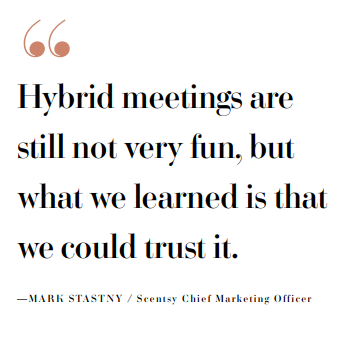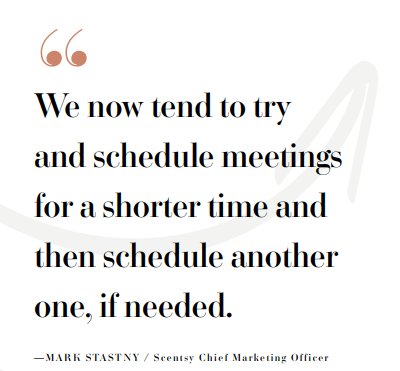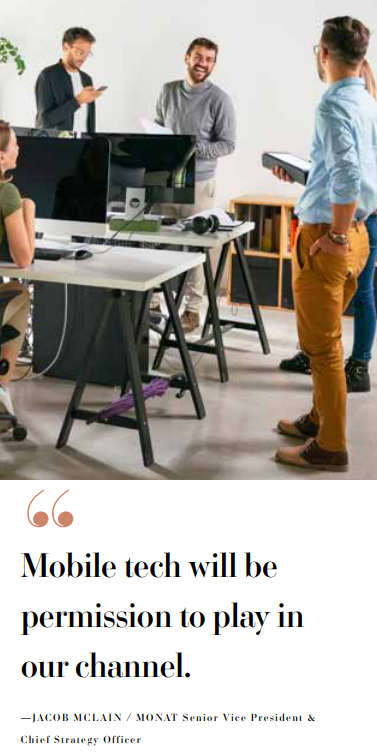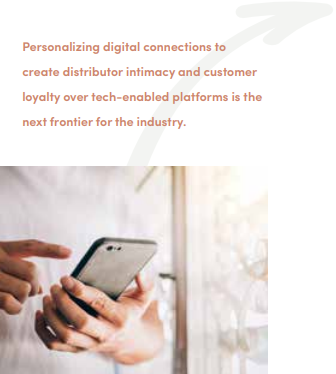Reimagining office culture in a post-pandemic world
Almost two tumultuous years later, life at the office barely resembles the rigid nine-to-five template that has defined workplace culture for generations. The pandemic ushered in a rapid acceptance and adaptation of a new way to work, and as teams learned to collaborate virtually, industry leaders watched in real-time as productivity and efficiency didn’t falter, and, in most cases, actually improved.

Photo credit: Kite_rin/shutterstock.com
But after months of supply chain challenges and geographic restrictions, the pandemic had another alarming surprise up its sleeve: An unprecedented labor shortage. In September 2021 alone, more than 4.4 million workers walked off the job. With this trend, dubbed the “Great Resignation,” companies are now seeking to hire from a pool of talent that has significant leverage.
To stay in the game, companies must offer flexibility and a category of benefits workers didn’t feel empowered to ask for previously, like the opportunity to build their careers and spend more time with their families (all while wearing comfortable pants).
With new metrics in hand of how remote and hybrid work can positively impact the bottom line, executives now have the opportunity to reshape what work could look like for their employees and independent workforce. But will the direct selling channel be willing to reimagine and reinvent itself—not just for the field but for corporate employees as well?
Trust and Flexibility Go Hand-in-Hand
At Scentsy, the approach to developing a work model for its knowledge worker base has radically transformed. Their once one-size-fits-all on-campus corporate model has become a customizable framework, tailored to each department and individual manager.
“I would say Scentsy was a place that was not massively conducive to flexible work options prior to the pandemic,” said Mark Stastny, Scentsy Chief Marketing Officer. “Coming out of that, our worldview changed and forced us to put in place not only tech solutions but also a level of cultural shift and trust.”
Stastny says Scentsy’s default corporate mindset previously assumed that creating a collaborative culture that seamlessly functioned across team boundaries required people to sit in the same conference rooms.

When the company was forced to send much of its knowledge workforce home and learn to utilize technology more productively, the corporate team discovered that collaboration could not only happen digitally, it also made everyone better communicators. Meetings became more intentional with the purpose made crystal clear, and catch-all conference room invites were ditched in favor of looping in only those absolutely necessary to make the decision.
When it was deemed prudent to return to company headquarters, each department was able to choose what worked best for their team. For some, naturally migrating back to an in-office structure made the most sense. For others, leaning heavily on remote work was more efficient. The result has been a healthier culture that attracts the right talent.
“What we saw was productivity increased, and people were actually happier in some ways relative to the flexibility it gave them in their lives,” Stastny said. “Hybrid meetings are still not very fun, but what we learned is that we could trust it.”
The New Office Etiquette
MONAT, who recently made the decision to end the lease on its legacy office while it constructs a new distribution and office facility in suburban Miami, has gone to a “default-remote” model and relies on technology platforms like Miro, which provides virtual whiteboarding in the meantime. The company’s remaining facilities are now only utilized for high-value, in-person gatherings.

Photo credit: GaudiLab/shutterstock.com
This caveat is something that many companies, even those who have gone fully remote, continue to find to be true: That there is tremendous transparency of thought that can only come from watercooler banter, non-verbal communication and the contagious energy of a successful group brainstorming session. The lessons of the last two years, however, have taught executives how to better run those gatherings, whether virtual or in-person, by more skillfully wielding existing integrated technology.
“With a proliferation of meetings once informal information sharing in the office was no longer an option, it forced a discipline around focusing meeting attendance, being intentional with who is included in emails, and reinforced a focus on each team member’s specific contribution to each initiative,” said Jacob McLain, MONAT Senior Vice President and Chief Strategy Officer.
Forced time out of office gave leaders the chance to reevaluate the system of work, measuring with fresh perspective the ROI on even subconscious office etiquette—like how much time is automatically blocked off for meetings in a group invite.

“We’ve learned that all meetings don’t have to be one hour just because it’s a convenient scheduling mechanism on our digital calendar,” Stastny said. “We now tend to try and schedule meetings for a shorter time and then schedule another one, if needed. It forces us to drive toward that decision in a shorter time frame.”
What’s more: Executives have discovered that some decisions shouldn’t be made in meetings at all, whether virtual or in-person.
“Meetings, if not managed properly, can be a lazy way to get business done,” Stastny said. “If you understand accountabilities and who decision makers are within the organization, there are much more efficient ways to make decisions and move the business forward than to get 12 to 14 people in a room and have a discussion about it.”
Permission to Play
Distributors were not exempt from the pandemic’s workplace challenges. While the majority of direct selling companies had already turned to online events and Facebook groups rather than party-based gatherings prior to regional shutdowns, distributors still had to find new pathways to reach customers when living rooms and coffee shops were no longer an option.
For Scentsy consultants, messaging platforms became the surprisingly powerful tool of choice for interacting with the field and inviting customers to engage with the products.

“It’s almost like the bulk of the energy of the party has shifted to that messaging platform,” Stastny said. “Yes, there is usually a linked Facebook party, but it’s happening on the text platform.”
Like the corporate office team, distributors and their customers have also spent the last two years evaluating their relationship to work, friendships and day-to-day tasks, like shopping, and how they want each category to fit into their lives. Receiving shopping content through a message, rather than a real-time virtual or in-person shopping event, allows customers the flexibility to absorb and act on the information whenever it is convenient for them.
“We’re always looking for ways to make customer contact and engagement as efficient as possible,” Stastny said. “There has to be an efficiency gain in there for why people are wanting to receive content that way, and that has caught us by surprise.”
With this understanding, a digital-first approach is now non-negotiable for every element of business, from onboarding to customer service. Training, product guides, shipping details, upline communications—all touchpoints need to be mobile-friendly. For MONAT, that has meant capturing the advantage that comes from relational selling and activating it through digital resources.
“Mobile tech will be permission to play in our channel,” McLain said. “Many companies purchase technology and adapt their business to the technology, but we are taking the inverse approach. We are building bespoke technology that leverages the learnings from the pandemic around customer trial, conversion and engagement, as well as Market Partner skill development and pivoting those to a digital-forward approach.”
Rebooting Normal
In many ways, the last two years felt like building the plane while flying. The circumstances demanded a mad dash to assemble and construct new organizational infrastructure without much preparation or the comfort of familiar rhythms, and many within the retail and service industry crumbled under the weight of these tasks. And while the direct selling industry, with its remote distributor workforce and established e-commerce platforms, was arguably better prepared than other industries, it was not without hurdles.
“Retail is declining; e-commerce is hypercompetitive and plays in a space of consumers who switch brands impulsively,” McLain said. “Our channel will need to bear in mind our competitive advantage—personal connection—but provide the tools for our distributors to drive that connection outside of parties, workbooks and team meetings. Digitizing what has been effective for decades should be front of mind for all of us in the channel.”

Personalizing digital connections to create distributor intimacy and customer loyalty over tech-enabled platforms is the next frontier for the industry, according to McLain. Showing up digitally will mean significant investments in mobile and e-commerce technology, but in a world that is rapidly embracing a digital-only work environment, it will be a prerequisite for success.
As the world crests what will hopefully be the final challenging hill of this pandemic, the industry now has a chance to reflect on lessons learned about how to design a healthy and productive office culture and then reboot what “normal” will look like from now on.
“Scentsy has always had the value that we want people to be meaningfully engaged in work, but we don’t want work to be everything to them,” Stastny said. “I think that dynamic, which has been around for some time, has been accelerated through what we learned through COVID. Regardless of what happens post-pandemic, we will never go back to what it was like before.”
From the January 2022 issue of Direct Selling News magazine.


